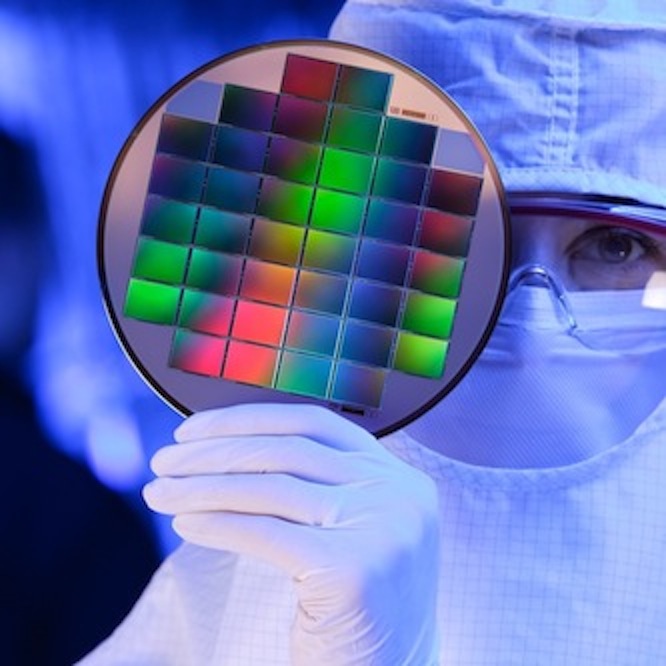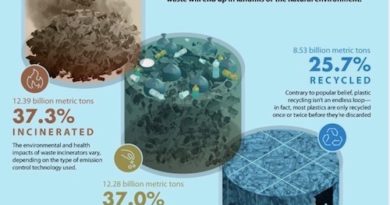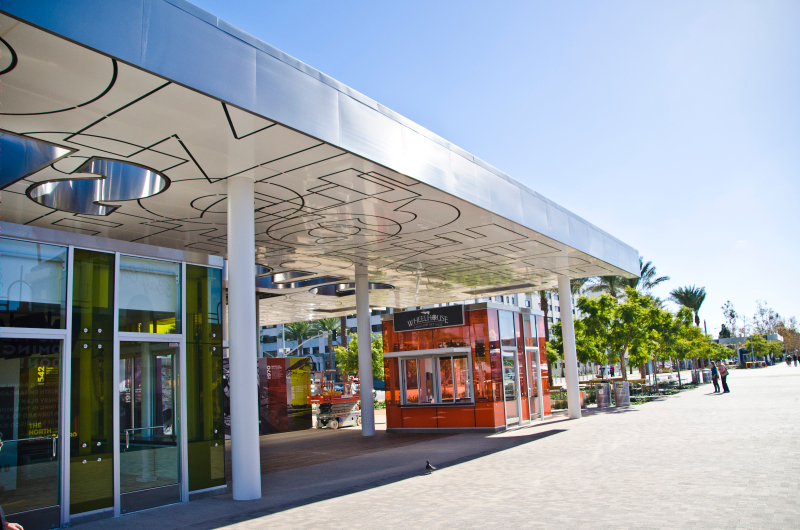Daily Business Report-Oct. 28, 2014
Sensor technology is one of the topics to be explored in the ‘Make it in America’ conference Nov. 19-22 in Escondido.
‘Make It In America’ Conference to Encourage
Asian Investment and Entrepreneurship in U.S.
Video games, drones, sensor technology, virtual reality and paper-less paper — all investment possibilities — will be some of the topics explored in a first-of-its-kind conference to take place Nov. 19-22 at the California Center for the Arts in Escondido.
“Make It In America: Boosting Possibility Through Innovation and Entrepreneurship” will also focus on latest advances in stem cell research, nanotechnology and other medical applications and how to market to millennials, as well as how to do business in America and Southern California.
The twofold aim of the conference is to spotlight San Diego as THE hub of innovation for the future and to focus on investment opportunities for businesses here and abroad, particularly from China, Vietnam and Thailand. While Asian participants are invited to consider America’s potential for investment, regional businesses are invited to attend to raise awareness about what they do, meet potential partners and investors or gain additional insights on improving their products or industries.
“The goal of this three-and-a-half day round of activities is to bring together like-minded innovators and investors to generate new product or industry in the most lucrative market in the world,” said county Supervisor Dave Roberts.
“Even though your business may be elsewhere, you will understand the purchasing power of this market and learn how to reach it effectively,” added Rosalynn Carmen, president of the Asian Heritage Society, which is producing the conference with the county.
To register for the conference, click here.
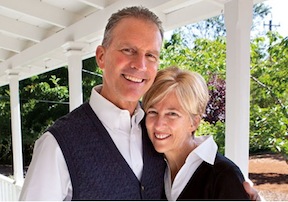
Mulvaney Family Awards Nearly $3M to
USD Center for Community Service Learning
A gift of nearly $3 million from San Francisco Bay Area couple Karen and Tom Mulvaney will expand the reach and impact of the University of San Diego’s Center for Community Service Learning in San Diego and around the world, the university announced today.
In honor of the gift, the center will be renamed as the Karen and Tom Mulvaney Center for Community, Awareness and Social Action (CASA).
“This is truly a transformative gift and one that will allow generations of University of San Diego students to not only give back to their local and global communities but to grow personally, professionally and spiritually,” said USD President Mary E. Lyons. “We are very grateful for the Mulvaneys’ generosity.”
The Mulvaneys’ gift also resulted in another $450,000 for the center from hundreds of other donors through a matching challenge completed in 2012.
Tom Mulvaney graduated from the University of San Diego School of Law in 1977. The couple’s son, Mason, earned his bachelor’s degree in 2009 from the university. Tom’s father, Jim, a noted San Diego civic leader, also taught at the university of San Diego School of Law.
Through their gift, CASA will be able to expand its efforts for faculty, staff, students and alumni. The gift will also establish the Mulvaney Fellows Program, where students from both the University of San Diego and Saint Mary’s College of California will participate in community-based learning and engagement activities. The Mulvaneys’ daughter, Meg, is a graduate of Saint Mary’s College of California in Moraga and is currently teaching in Nepal.
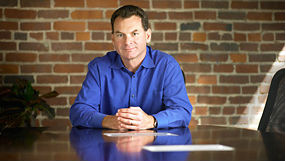
New CEO Hired for Synthetic Genomics
DNA pioneer Craig Venter’s startup Synthetic Genomics Inc. on Monday announced the appointment of a new CEO from a major pharmaceutical company. Oliver Fetzer, previously president and CEO of Boston-based Cerulean Pharma Inc., will succeed Venter as CEO and join the privately held La Jolla-based company’s board. Venter will remain executive chairman and co-chief scientist.
“I look forward to working with Oliver and the executive team to continue to meet our goals of turning SGI’s science and technology into commercially viable and societal changing products,” said Venter.
The company is developing synthetic DNA products, including algae-based food, agricultural products, vaccines, clean-water technologies and biofuels
— Times of San Diego
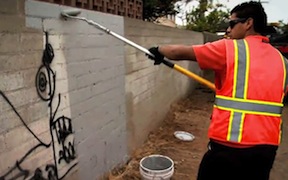
Audit Says City’s Graffiti Warriors
Losing Battle With Bureaucracy
The division of abatement responsibilities within San Diego’s graffiti control program causes delays and its reporting process is overly complicated, according to an audit report presented to the City Council on Monday.
The program, which has had its staff and budget downsized over the years, has significant weaknesses that hinder graffiti control goals, including splitting abatement responsibilities between three entities: the Transportation and Storm Water Department’s Street Division, the Development Services Department’s Neighborhood Code Compliance section and a third-party vendor called the Urban Corps of San Diego County, according to the report.
Officials noted that the city’s process for reporting graffiti is confusing, and in most cases residents cannot track the status of their complaints.
Graffiti can be reported to all three abatement agencies, although the Street Division handles vandalism on public rights-of-way, while Urban Corps does so on private property and Neighborhood Code Compliance employees work to enforce graffiti laws and defer reports to the other agencies, according to city officials.
“You have to tell people to call three different numbers and hope that they know the difference between public right-of-way and private property (when) even our own city employees, as the audit points out, (don’t) necessarily know the difference,” council President Todd Gloria said.
Staff from the city auditor’s office delivered a set of recommendations, some of which were already in the process of being implemented, including centralizing graffiti abatement operations with the Street Division; studying which operations could be performed best by city crews or other vendors; improving coordination among the groups involved in graffiti control; and offering incentives for those reporting graffiti vandalism.
— City News Service
Cops Hope State Salary
Survey Leads to Raises
San Diego’s struggle to recruit and retain cops was evident this year when the department’s staffing levels reached record lows. Officers contend pay is the problem and hope the city will give them raises after the results of a statewide salary survey are released.
The review of officers’ pay and benefits is expected by the end of this month. Police Officers Association President Brian Marvel says early results show San Diego officers are out earned by other agencies in the region and across California.
“Based on the preliminary information that we received, it shows us being at about 19 out of 19 departments that were analyzed,” he said in a phone interview.
Marvel mentioned that could change slightly because some adjustments still need to be made before the report is finalized.
The city funded a similar study in 2007 that found San Diego’s salary and benefits were comparable to 18 other agencies, but its health care costs and pension contributions put officers’ take home pay near the bottom of the list.
Officers received a raise later that year and another in 2008, but suffered from budget cuts in 2009.
— KPBS
Registrar of Voters Designates
14 Sites for Mail Ballot Drop-Offs
The Registrar of Voters is making it easier for voters using mailed ballots — designating 14 sites across the county where completed ballots can be dropped off before election day.
The pilot program will allow mail ballot voters to swing by any one of 12 libraries, the Oceanside City Clerk’s office or the Poway Senior Center and drop off their mail ballots during each location’s regular business hours. These drop-off locations are not early voting locations, but for mail ballots only. Ballots can be dropped off through Nov. 3. The election is Nov. 4.
“The number of voters who opt to vote by mail continues to rise and this new program will help with the timely return of mail ballots, decrease the high volume of voters dropping off mail ballots at polling places, and expand our services,” said Registrar Michael Vu.
The quick return of mail ballots speeds up the overall counting process because they can be prepared before Election Day saving time and taxpayer dollars.
Scientists Make Enzyme That
Could Help Explain Origins of Life
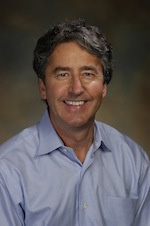
Mimicking natural evolution in a test tube, scientists at The Scripps Research Institute (TSRI) have devised an enzyme with a unique property that might have been crucial to the origin of life on Earth.
Aside from illuminating one possible path for life’s beginnings, the achievement is likely to yield a powerful tool for evolving new and useful molecules.
“When I start to tell people about this, they sometimes wonder if we’re merely suggesting the possibility of such an enzyme — but no, we actually made it,” said Gerald F. Joyce, professor in TSRI’s Departments of Chemistry and Cell and Molecular Biology and director of the Genomics Institute of the Novartis Research Foundation.
Joyce was the senior author of the new report, which was published online ahead of print by the journal Nature on Oct. 29.
The Challenge of Making Copies
The new enzyme is called a ribozyme because it is made from ribonucleic acid (RNA). Modern DNA-based life forms appear to have evolved from a simpler “RNA world,” and many scientists suspect that RNA molecules with enzymatic properties were Earth’s first self-replicators.
The new ribozyme works essentially in that way. It helps knit together a “copy” strand of RNA, using an original RNA strand as a reference or “template.” However, it doesn’t make a copy of a molecule completely identical to itself. Instead it makes a copy of a mirror image of itself — like the left hand to its right — and, in turn, that “left-hand” ribozyme can help make copies of the original.
No one has ever made such “cross-chiral” enzymes before. The emergence of such enzymes in a primordial RNA world — which the new study shows was plausible — could have overcome a key obstacle to the origin of life.
Biology on Earth evolved in such a way that in each class of molecules, one chirality, or handedness, came to predominate.

